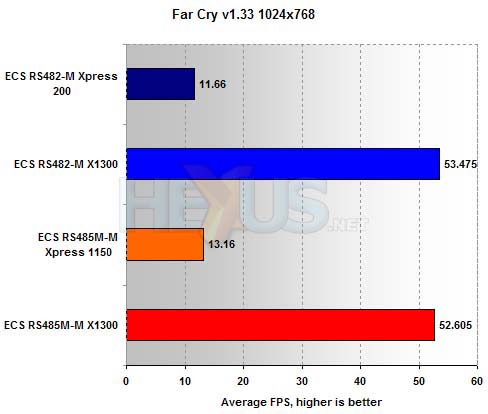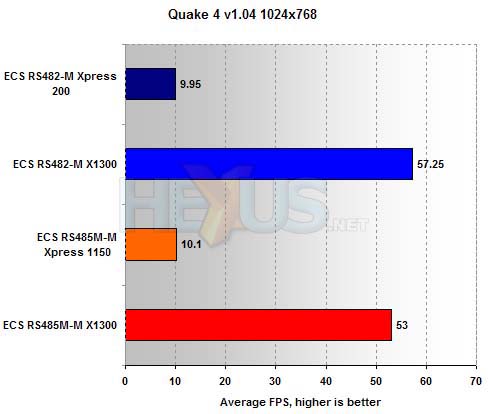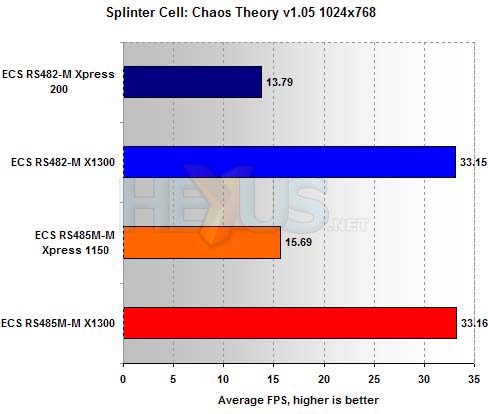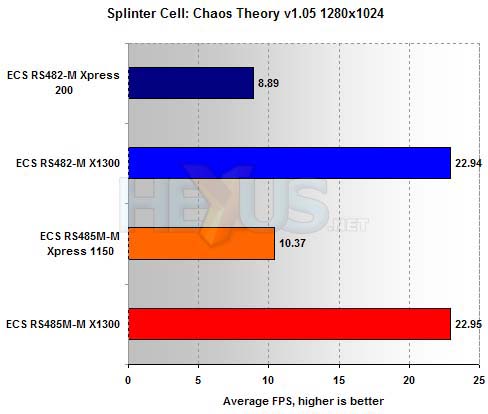Benchmarks: 3D performance and storage subsystems
Gaming and storage evaluation
Our final page of benchmarks looks at 3D performance and closes with a little look at storage.

Now before we start gasping at the very low FPS results here, let's not forget that we're dealing with pretty low-end graphics here. The X300-based integrated graphics doesn't have much hope of providing stellar performance in any recent 3D app. Still, drop even a cheap X1300 into the PEG slot and you have yourself a playable FPS at 1024x768.

The story is exactly the same for Quake 4, although the X1300 performs slightly better in this game with the RS482-M than the RS485M-M.

Splinter Cell slows proceedings down a little, shaving 20FPS off the average for the X1300, compared with our previous two 3D tests. Still in the realm of the playable, though.

We're sick and twisted, though, so we upped the resolution and things dropped below a reasonable FPS average. It's a bit of a shame, given many LCDs use 1280x1024 as a native resolution, but the motherboard isn't to blame for this.
Storage
We checked out the SATA ports on both boards, getting just shy of 60MB/s average read speeds from them both. The burst speed of the RS482M was 111MB/s, while the RS485M-M managed 114.2MB/s. Random access speeds were identical at 13.2ms. We couldn't compare the two boards for FireWire because one of them didn't have it. The RS482-M achieved 38.3MB/s with our Akasa external enclosure, though.
It's USB that we really want to show you...

We're used to USB2.0 being a little slower than FireWire in storage scenarios, so we'd expect something less than 40MB/s, but no less than 20MB/s at an absolute minimum. The SB400 southbridge used with the RS482-M has some USB2.0 performance issues, clearly evident here. ECS's RS485M-M isn't much better, but we'll save our criticism of that for now, seeing as it's quicker.
Overall then, our benchmarks results show the board performs just fine, apart from a 'whoops' in the USB department.









